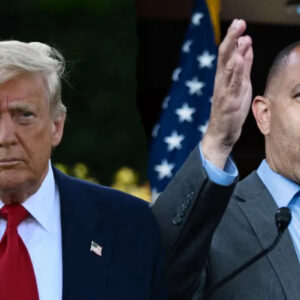The sight of flashing red and blue lights in your rearview mirror can be an anxiety-inducing moment for any driver. As you pull over to the side of the road, your heart rate quickens, and your mind races with questions. “What did I do wrong?” “Is my paperwork in order?” And then, as the officer approaches your vehicle, you notice something peculiar – they reach out and touch the tail lights of your car.
This seemingly simple and enigmatic act has left many motorists wondering about its significance. Is it a mere quirk of individual officers, or does it hold a deeper purpose within the realm of law enforcement? In this exploration, we will delve into the compelling reasons behind why cops consistently touch the car’s tail lights during traffic stops, shedding light on a practice that has both practical and symbolic implications in the complex world of policing.
Documenting the Stop
One of the primary reasons police officers touch the car’s tail lights during a traffic stop is to document the interaction. This simple gesture leaves behind a small but significant piece of physical evidence. By touching the tail lights, the officer leaves their fingerprints on the vehicle. This can be essential in cases where there might be disputes about the nature of the stop or the conduct of the officer. It provides a timestamped record that can help verify the officer’s account of the incident if needed.
Officer Safety
Traffic stops are among the most unpredictable and potentially dangerous situations that police officers face. They often approach vehicles not knowing what to expect from the driver and passengers. By touching the tail lights, officers create an opportunity to leave evidence that they were at the scene. In the unfortunate event that the traffic stop escalates into a more dangerous situation, this evidence can help investigators piece together what happened.
Deterrence
The act of touching the tail lights can also serve as a deterrent to potential troublemakers. When a driver sees an officer touching their vehicle’s tail lights, it sends a clear message that they are being watched closely, and their actions are being documented. This can discourage drivers from attempting to hide or dispose of any contraband or evidence of wrongdoing in their vehicle.
Establishing a Routine
Police officers often rely on routines and procedures to ensure that they conduct traffic stops in a consistent and safe manner. Touching the tail lights can be part of this routine. By establishing a consistent practice, officers can reduce the likelihood of missing important details or making mistakes during a traffic stop. Routine actions also help officers stay focused and minimize the risk of overlooking potential threats.
Demonstrating Authority
The act of touching the tail lights can also be a display of authority. It reminds the driver that they are interacting with a law enforcement officer who has the power and responsibility to enforce the law. This display of authority can help maintain control and ensure that the driver complies with the officer’s instructions.
Cultural Traditions
In some police departments and regions, touching the tail lights during a traffic stop has become a cultural tradition or a symbol of respect. While the specific reasons may vary, it is seen as a way for officers to signal the beginning of the interaction and to show respect for the driver and passengers. This tradition can vary from one department to another and may not be universal.
Conclusion
The act of police officers touching the car’s tail lights during traffic stops may seem like a curious and arbitrary practice, but it serves several important purposes. It helps document the stop, enhances officer safety, deters potential troublemakers, establishes a routine, demonstrates authority, and, in some cases, reflects cultural traditions within law enforcement. While the reasons behind this practice may vary among individual officers and departments, it remains a small but significant aspect of the complex world of policing. Understanding the rationale behind such practices can contribute to more informed and respectful interactions between law enforcement and the public during traffic stops.





